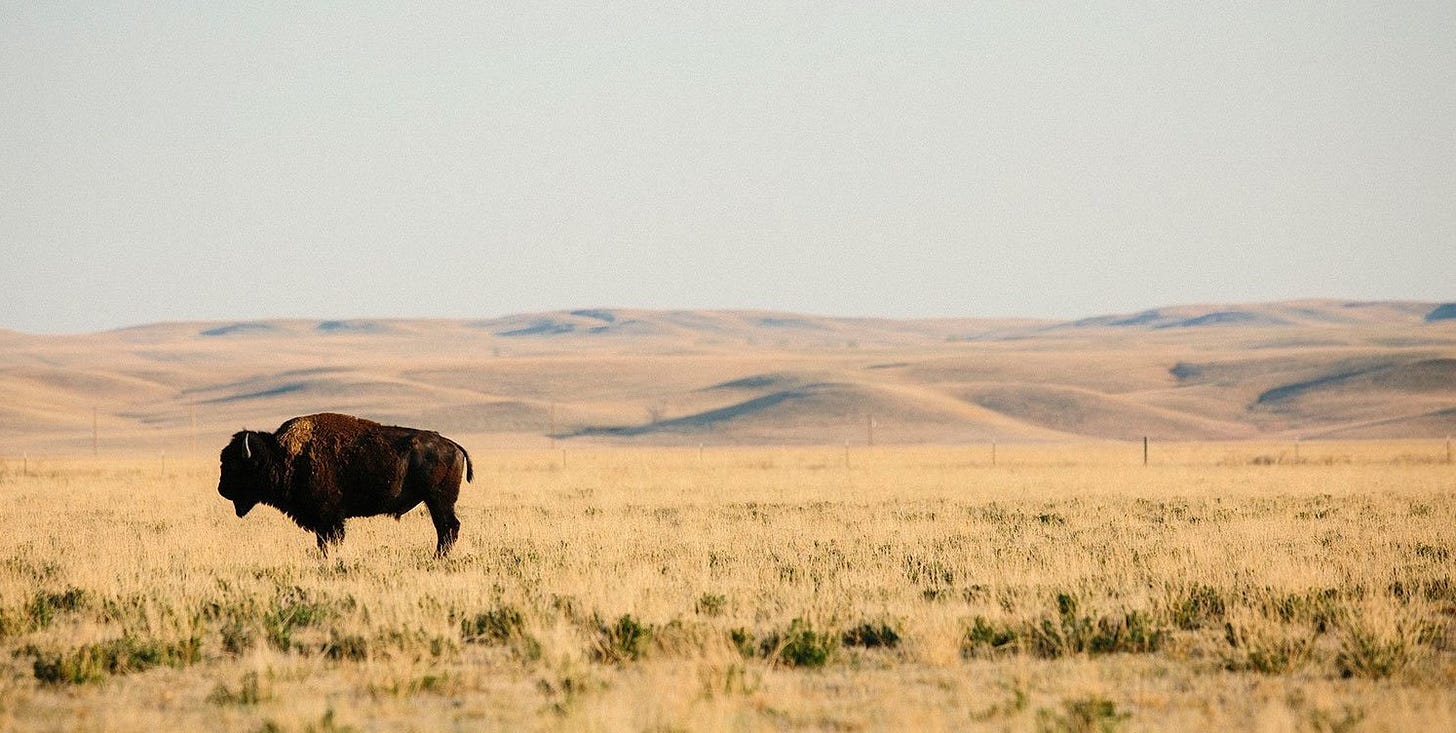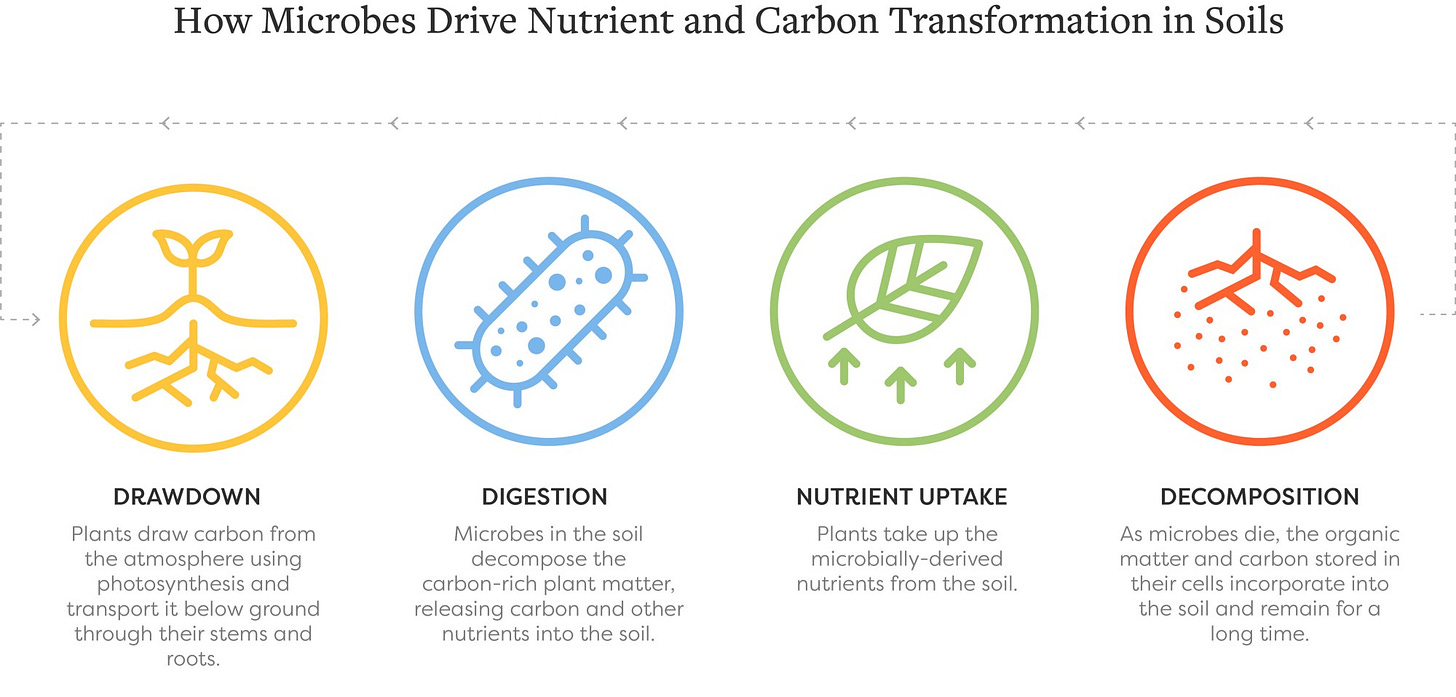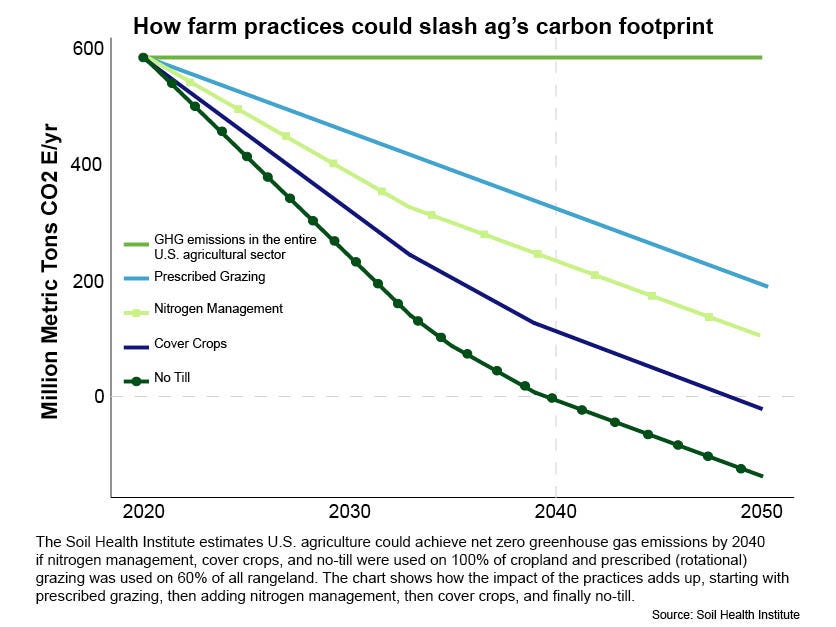Soil carbon: The solution beneath our feet
Soil is one of nature’s most powerful, cost-effective carbon capture technologies. However, when it comes to picturing nature-based climate solutions (NCS), most people think of conserving, restoring, and responsibly managing lush forests, which absorb nearly one-third of the carbon dioxide (CO₂) emitted from burning fuels every year. But for those who champion soil carbon as a climate mitigation tool, the focus is on a different biome: grasslands. These ecosystems, including grasslands, rangelands, savannas, shrublands, and meadows, cover between 20 to 40 percent of the world’s land surface and constitute about 70 percent of all agricultural land. And as it turns out, agricultural soil isn’t just a medium for plant growth. In fact, our planet’s grasslands also contain massive reserves of biodiversity and can safeguard up to 30 percent of the world’s carbon in their plants and soils.
Globally, soils can store between 1.5 to 5.5 billion tons of carbon a year - more than is contained in the atmosphere and all of the Earth’s plant biomass, making it a leading carbon sink alongside forests and oceans. One acre of immaculate soil can store more than four tons of carbon, which builds up over millennia through a complex process that starts with photosynthesis. Prairie plants act as scrubbers, absorbing carbon out of the atmosphere and returning to the soil what isn’t utilized in the form of residue and root secretions. This system feeds microbes in the soil, which transform it into the building blocks of soil organic matter (SOM) - helping to stabilize the carbon and give soil its water-retention capacity, its structure, and its fertility. This protected carbon builds up as long-term “carbon stocks” with different permanence. But human activity, agriculture, in particular, has released soil carbon at a faster rate than it can be replaced. In fact, since the dawn of farming, 12,000 years ago, an estimated 133 gigatons - 133 billion tons - of the original carbon stock in the Earth’s soil has been re-released into the atmosphere.
The rate of soil carbon loss has only increased since the Industrial Revolution brought with it new tools and processes (i.e., seed drills and machines for tillage) that increased labor productivity while paving the way for large corporations to consolidate food production. And following the emergence of the chemical industry post World War II, agriculture became increasingly interested in applying new herbicides and insecticides to control weeds, fungi, and pests that crowded vulnerable monoculture cropland. By the late 1960s, the global food system was naively reveling in the benefits of the Green Revolution, which was propagated by a near-ubiquitous adoption of chemical inputs as well as new breeds of high yield crops. In the short term, these innovations temporarily satiated the appetite of a growing population. But in the long term, intensive tillage, monocropping, and a cocktail of chemicals - including fungicides, pesticides, and herbicides - have become a major contributor to our biodiversity crisis, killing off the beneficial microorganisms like mycorrhizal fungi in the soil.
Nowadays, landowners across the US Corn Belt, lured in by biofuel incentives and crop insurance, are converting undisturbed natural grasslands to rows of corn, which requires 140 gallons of fossil fuels per acre to plant, grow, and harvest, at a pace comparable to deforestation rates in Brazil. Not only does this present a threat to the waterways, animals, and plant species that reside there, but the physical disturbance during tilling disrupts the microbial community belowground, making soil microbes hungrier for organic matter. In doing so, research has revealed a 59 percent decline in soil carbon stocks when grasslands are converted to croplands. And by continually degrading the soil, there is a continued inability of an area to accumulate carbon from the atmosphere. In the end, desertification commonly leaves once productive farmland completely barren, unable to support ruminants or crop production. As a result, more than a third of farmland in the US corn belt (100 million acres) has lost its fertile topsoil due to erosion.
In developing countries, the situation isn’t much better. Across South Africa, for example, traditional grazing lands are being plowed up to make room for forest plantations, which offer little biodiversity benefits, consume more water than native plants, and dry up rivers and wetlands. And between 2000 to 2014, 80 percent of the new commodity row crops (~40.53 million acres) seeded across Brazil came as a result of the conversion of pastures. With this in mind, many ecologists express what they view as a lack of prioritization for the world’s grasslands, which can:
Reliably store carbon: In contrast to “active” soil carbon, which resides in topsoil and is in continual flux between microbial hosts and the atmosphere, grasslands sequester a majority of their carbon underground, where it is stored safely for hundreds of years to come. And new reports reveal that in a warming world, treeless, grassy biomes can store more carbon than even forests because they are less vulnerable to fire, drought, and disease. When fires do burn grasslands, the SOC is well protected because it is buried deep in the soil. In fact, low-intensity fire, which is a normal disturbance to grassy ecosystems, causes the oxidation of organic carbon while simultaneously stimulating root growth and increasing organic matter additions to the soil. And if atmospheric CO₂ doubles pre-industrial levels, researchers estimate carbon uptake in grassland soils will increase 8 percent.
Enhance agroecosystems: Soil carbon management can be useful in combating climate change, in addition to bolstering food and water security. In just the US, scientists estimate that domestic rangelands - commonly grazed by livestock - could sequester up to 330 million metric tons of carbon dioxide in their soils, equivalent to 70 million cars driven for a year. But beyond carbon, regenerative agricultural practices, such as holistically managed grazing, no-till farming, and cover cropping, come with a host of co-benefits - including a vast increase in SOM, which serves as a reservoir of nutrients and water into the ground. Increases in soil matter catalyze increases in microbial activity, water infiltration, biodiversity, and protection against soil compaction. And by reorienting our farming framework to focus on soil health, we can create a virtuous cycle that’s good for the environment, farmers, and consumers who can access more nutrient-dense food.
In short, “carbon farming,” which focuses on restoring soil health to absorb carbon, can be one of the most valuable tools we have to nourish a growing population in a way that protects land and dampens climate change. Restoring degraded and desertified ecosystems, which are evident in the US Great Plains and places like northern Mexico, Africa’s Sahel, and Mongolia can sequester an additional 1 to 3 billion tons of carbon annually, equivalent to somewhere between 3.5 to 11 billion tons of CO₂ emissions. In doing so, the agricultural industry could transform from one of the largest emitters of carbon into the single largest natural carbon sink. Next week, we will cover the role that emerging technologies will play in monetizing soil carbon sequestration!





